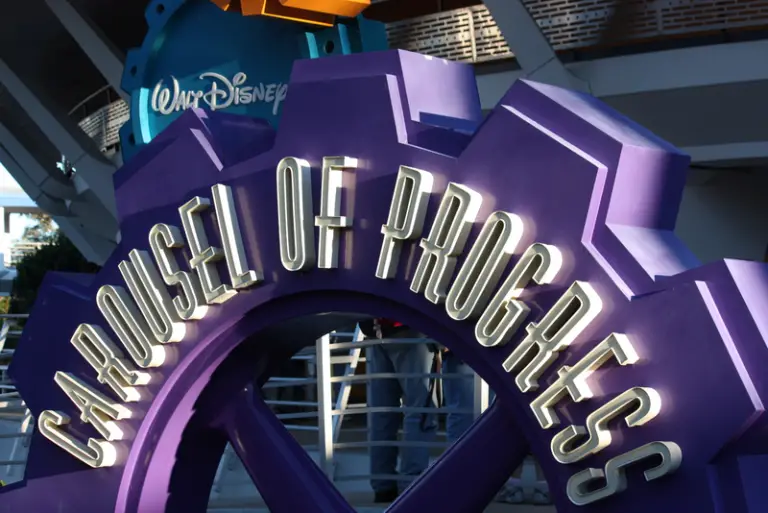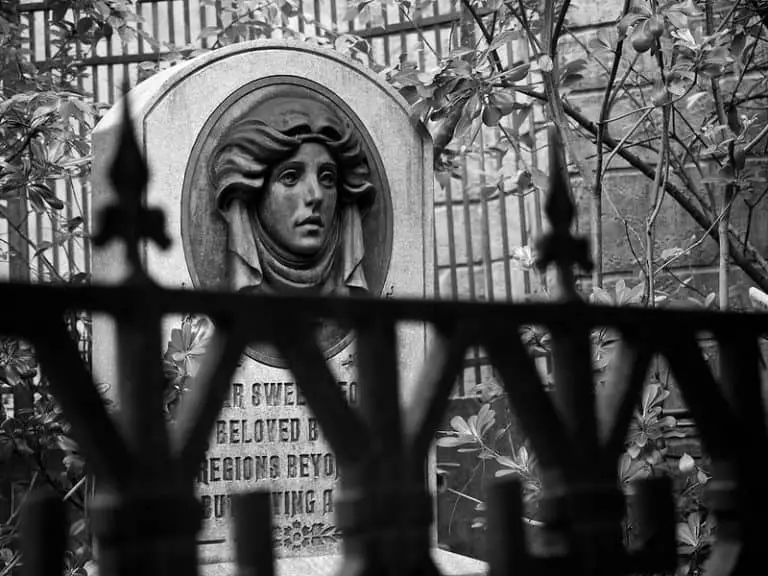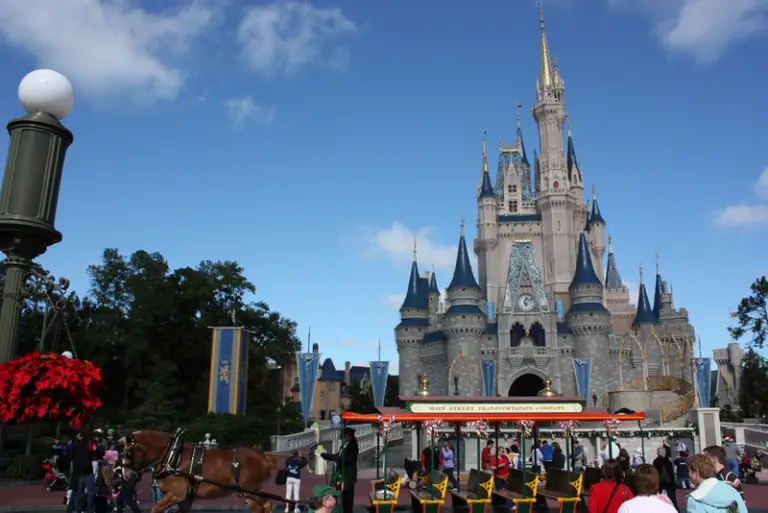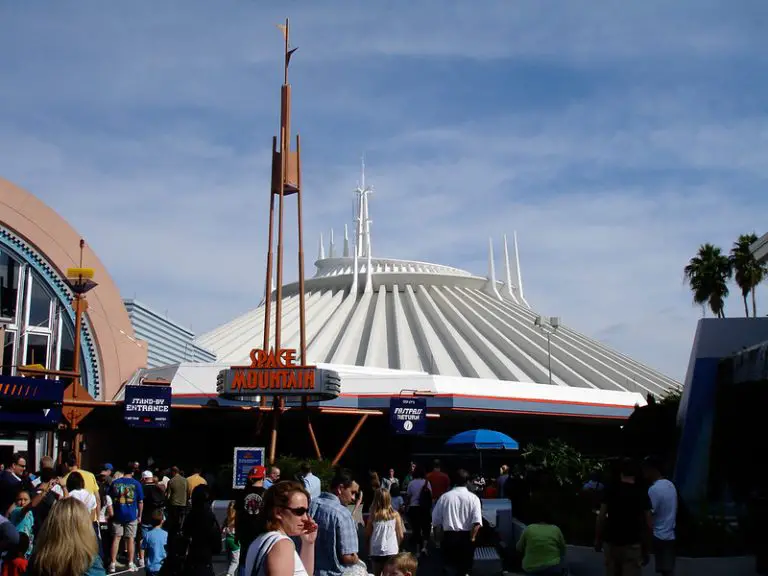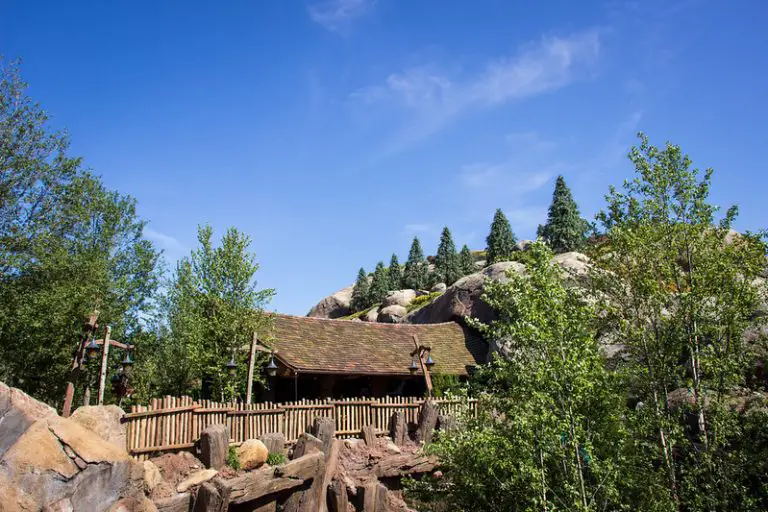Tomorrowland Speedway review
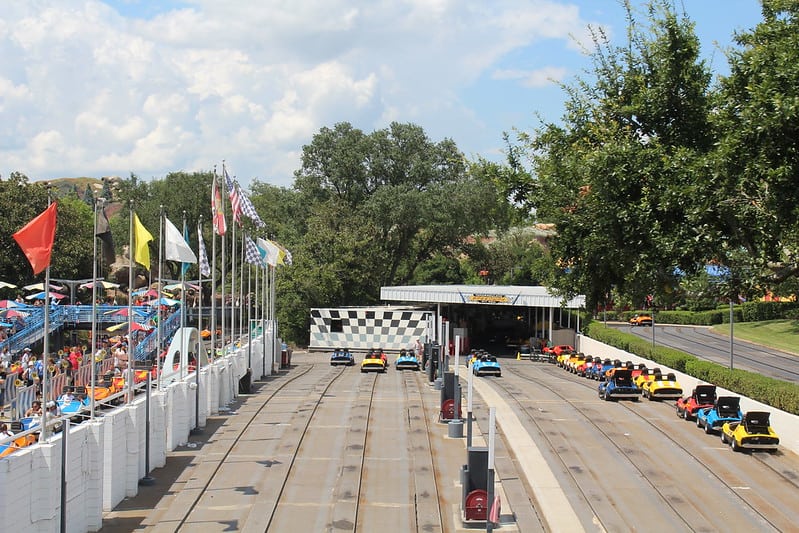
When you’re planning to visit Disney World, especially for the first time, one of the go-to planning strategies is to visit all the greatest attractions so that you have the quintessential Disney experience.
But is a ride considered a classic simply because it is old? Surely, an attraction’s endurance should point to its quality in some way, right? When it comes to Tomorrowland Speedway, opinions are mixed.
It is one of the oldest rides in the park, but it can be frequently criticized. The question is why, and considering this is an attraction aimed at kids, is the criticism really justified?
Well, in this Tomorrowland Speedway review, we’ll look at some of the specifics of this ride, including wait time and what the ride experience is like. If you do decide to ride the Speedway, you’ll want to know how best to plan for it.
Also, we’ll look at the Speedway’s relationship with its sister ride Autopia in Disneyland. But first, let’s look at the ride’s history.
Tomorrowland Speedway History
Tomorrowland Speedway began operation on October 1, 1971, as one of Walt Disney World Resort’s opening day attractions. The Tomorrowland Speedway began its life as the Grand Prix Speedway. Unlike Disneyland’s more futuristic Autopia, the Speedway was intended as international racetrack. The ride was sponsored by Goodyear Tires, which provided the tires for the Mark VII cars.
Since then, it has undergone, slight, sporadic changes. Three of its curves were shortened to make room for the advent of Space Mountain in 1974. It was then shortened slightly at some point between 1987 and 1988. It was remodeled with all of Tomorrowland in 1994. In 2012, the track was once again shortened to make room for the relocated Dumbo the Flying Elephant and in 2019 for an upcoming TRON Lightcycle Power Run rollercoaster.
All in all, the shortening has far exceeded the expanding, and the current track is only two-thirds its original length. The ride takes up quite a bit of real estate, so when room must be made, it’s an obvious candidate for change.
From there, most of the changes were aesthetic. It went through a rebranding here and there: its name was changed to Tomorrowland Indy Speedway with the remodeling of Tomorrowland and further shortened to Tomorrowland Speedway in 2008. In 2019, the ride was repainted teal to be consistent with the rest of Tomorrowland.
The name changes coincided with changes of theme. After its initial rebranding as a part of Tomorrowland, it changed once again in 1999 to reflect Disney’s partnership with the Indianapolis Motor Speedway. The relationship with the Indy Speedway was severed with the name change in 2008.
The 1999 speedway redesign intended to make the speedway resemble the Indy Speedway. It bore the wind and wing logo. It included Gasoline Alley, the Scoring Pylon, and the Yard of Bricks. There were also panels from the Indy 500, Brickyard 500, and the Grand Prix Raceway.
Today, it is themed consistently with the rest of Tomorrowland. The racetrack, with its 1970s style fossil fuel cars, now combines with Tomorrowland’s bright-eyed, optimistic futurism. It’s an interesting combination to say the least. This ride tries to be both, in a way. The actual ride still feels like a glorified version of bumper cars, but the branding suggests something forward thinking.
The speedway’s association with Tomorrowland puts it in an odd place. None of the changes over the years have affected the fundamentals of the ride; it is still gas-fueled race car attraction. That puts it, at best, at today, maybe even yesterday. It isn’t tomorrow. So, while the ride has been a constant presence in Magic Kingdom, it’s a bit of a thematic mess currently.
If Disney chooses to keep it in its current form for preservation, it ceases to be consistent with Tomorrowland’s theme. For this reason, some have called for Disney to rethink the speedway.
Tomorrowland Speedway Height Requirement
There is, in essence, two different height requirements for this ride and it is important to distinguish them. Otherwise, you might assume that the first number you see is the only restriction there is. To drive one of these cars, you must be able to reach the pedals. Therefore, in order to drive the car, you must be at least 54 inches tall. That’s somewhere around the height of the average ten-year-old.
Because this ride can carry a non-driving passenger, there is a secondary height requirement. Children must be 32 inches to ride in one of the cars. That is about the height of a toddler. Obviously, with both height restrictions, you want to measure your child to be absolutely sure.
Tomorrowland Speedway Speed
The speed of the cars on the speedway is, frankly, not terribly fast. It probably shouldn’t be, with children several years away from having a driver’s permit behind the wheel. The top speed is around 7.5 mph. For comparison’s sake, most golf carts have a top speed of 15 mph. Many riding lawnmowers have a top speed of around 8 mph. The speed, or lack thereof, is one of the most common complaints about this ride. The ride should take a little less than five minutes once you get into the actual car.
Preparing for Tomorrowland Speedway
This ride certainly does have its audience, and it is particularly for young children. You’ll see many families waiting in line. The problem with the wait is that it tends to be longer than is posted. They can get up to 30 minutes. The culprit tends to be how the loading and offloading of the ride, which can take a bit of time.
Technical problems can also complicate the wait. Cars may have a difficult time starting. Obviously, this is basically impossible to plan for.
If you are trying to decide if you will use Genie+ to skip the line for this ride, there’s some things to consider. First, you should consider your priorities. First, as of this writing, it is unclear whether this attraction will be included in Genie+, though it is expected to be.
The Speedway’s inclusion would mean that you would not need to pay for a Lightning Lane outside of the purchase of Genie+. Genie+ is a paid service, unlike the FastPass system, where the program is purchased for the day.
Some rides, however, will not be included, and you will have to purchase the Lightning Lane separately. As of this writing, we don’t have official word whether Tomorrowland Speedway will be included.
For the Lightning Lanes you get through the Genie+ app, you can only reserve one Lightning Lane at a time, and you don’t have full control over the time it is reserved for. I don’t think it should be prioritized to that level.
If you’re still interested in riding the speedway (or the kids insist), you probably shouldn’t need to use Genie+. I would reserve that for the longer lines for rides. Instead of using up one of your Lightning Lane passes, it would probably be better just to plan around the busy time. The wait time peaks midday, so just wait until later in the afternoon or right before the park closes.
For the wait, you probably want to pay attention to the weather. Since the wait is outdoors, it is susceptible to the elements. On the one hand, you probably don’t want to get too hot; on the other, it can be rained out.
One more thing: if you do plan waiting during the busy time, be sure to bring some water. You will be outside and winding around the line, exposed to the heat. It isn’t about how long the line takes but the fact that it isn’t climate controlled.
Accessibility for Tomorrowland Speedway
Obviously, there’s quite a few concerns for health. Expectant mothers should avoid this ride. Disney also advises that anyone with blood pressure, heart, back, or neck problems shouldn’t ride, either. If you get motion sickness or something similar, you probably shouldn’t ride. If you have a wheelchair, Disney advises that you must transfer to ride.
The ride also has a rider switch service to let parents take turns if they have a child too young to ride. Say, for example, you have a baby, but both parents want to ride, you would approach a cast member with your entire party. Then you would be able to take turns riding while the other stays in the designated area.
Tomorrowland Speedway Queue
If my review causes me to come off as a curmudgeon, then part of the culprit is the wait for this ride. The queue for the speedway sets you up to fail at enjoying the ride. The wait for the speedway can be long, and a significant portion of the wait happens out in the sun.
There is no narrative involved with this ride. To a degree, there doesn’t need to be. Not every attraction at Disney World needs to have a cartoon character slapped on it. The issue is basically twofold: first, Disney’s greatest strength is its ability to immerse its guests into a story. It doesn’t have to be a movie story; it could be a story about the future or about racing. Second, you need to be distracted so you can forget that you’re standing in line.
Tomorrowland Ride Overview
There is a serious sweet spot in age for enjoying this ride the way it was intended. I can see kids too young to get behind the wheel enjoying the freedom of driving themselves around the track. Small children too young to drive even these cars will most likely enjoy the ride.
The ride remains very popular for children, and I can certainly understand the appeal. This is the closest they’ll get to really driving for many years. For anyone who can drive an actual car, it doesn’t seem like as much of an attraction.
This is why the Speedway exists and continues to exist: it gives children a taste of what it’s like to operate an automobile. I think that if this is the measure of the ride, then the ride seems to succeed. It explains why children continue to flock towards the ride, for the most part.
Like a lot of things in life, control here is merely an illusion. Once again, it is understandable; you don’t want a bunch of ten-year-old kids whipping around each other in at the daring speed of 7.5 mph. That would unleash pandemonium. The truth of the matter is that the cars run along a rail, making it impossible for the cars to pass one another. If you happen to get behind somebody slow, your ride will be slow as well.

The cars are the most obvious link to Autopia, the Speedway’s sister ride over in California. They are the same Mark VII cars but modernized somewhat. These cars were designed by Bob Gurr, who also designed the Monorail and other Disney machines. They have a vintage look, resembling the 1960s Chevy Stingray. It’s a good car to mimic. The cars also contain many safety features, including an engine governor, belt restraints, and a bumper.
One of Gurr’s most important contributions to the car was the “belly frame” design, which is like a round tube, bound together instead of welded. The idea was to build a frame that could flex so it can better endure bumps and crashes. The design was so successful that they kept it for future updates of the cars.
The ride can get a little jerky in its movement. The steering wheel can contribute to this somewhat, as some people find it difficult to control. Ultimately, the ability to control the car doesn’t really matter much. The track is present to keep the car from going too far out of control. You still want to steer with the wheel, since not following along the track will make trip bumpier. Similarly, it may take a lot of effort to push the accelerator down. This can be an issue, since slow cars can not only affect your experience, but the experience of the person behind you.
Over the loudspeaker, you can hear the voice of an announcer calling the race. That is the voice of Tom Carnegie, who was called “the Voice of the Speedway” in reference to his association with the Indianapolis Speedway.
The ride can get a little bumpy, which isn’t (in my experience) terribly unusual for a go-kart kind of attraction. The cars will occasionally bump into one another. Neither of these are necessarily deal-breakers, as they can be an expected part of the experience. It is worth noting so that you can be prepared.
One nice aspect of the ride is the observation bridge that goes over the racetrack. It allows family members to watch as the cars take off and is a great place for pictures.
One of the most obvious aspects of the ride is the noise. You can hear the rattling of all the engines in concert together. It’s a familiar sound, for those who have frequented go kart tracks at one point or another. Your mileage may vary as to whether this noise invokes nostalgic pangs of joy out of the smell of diesel fumes. It seems like a smell more associated with county fairs than the Happiest Place on Earth.
Tomorrowland Speedway Track
The track runs about 0.4 miles and is four lanes wide. It doesn’t quite resemble the Indianapolis Motor Speedway; the Indy is an oval track, the predominate form of racetrack. This track twists around on itself, presumably to conserve space. It winds around into two loops, with an overpass where the loops cross. It has five turns in all. The track has been expanded and trimmed a few times, but it still takes up a considerable amount of Tomorrowland.
The track is surrounded by some greenery here and there. You can see quite a bit of park from the track. In the far distance, you can see Cinderella’s castle. You can see other Tomorrowland attractions, such as the Astro Orbiter and Space Mountain. If you time it right, you can wave to the people moving on the PeopleMover as it passes by the track.
This makes the scenery sound better than it really is. The wall obscures most of the view. There’s still a lot of great stuff to see, but also stretches of nothing but gray.
The cars are huddled near the speedway’s pit row. You can see the chassis of cars stacked on top of one another under the canopy. These are the kinds of details that lend a feeling of authenticity.
Photo Opportunities
On the way out, there’s an opportunity to make a special Tomorrowland Speedway license. The kiosk, which was introduced in 2017, resembles an old-school photo booth, and for five dollars you can print out your picture on a driver’s license. Be sure to take cash or credit for this app because it doesn’t work with the MagicBand.
Tomorrowland Speedway vs Autopia
If you have more experience with Disneyland in California, you may be interested in how this ride compares to Autopia. The rides have a connected history; I’ve already indicated that they share car designs. Both date back to the opening day of their respective parks. The are quite a few similarities but with a few important differences as well.
Thematically, the two rides are completely different. It might seem there’s really only so much you can do with cars, but the emphases are different. The Tomorrowland Speedway is primarily focused on racing and competition, but Autopia is more about imagining a futuristic highway. That is the source of the name: auto utopia. When Autopia was built, the highway system was still part of the future.
There are pros and cons to each of them. The view of Autopia is clearly superior to that of Tomorrowland Speedway. There is an actual view, not just a grey wall. Autopia has trees, a highway sign, streetlights, an overpass, and a bridge. Autopia’s track is quite a bit longer, as well (nearly a half mile as opposed to 0.4 miles).
Autopia’s theming is much more thorough, as well. There is a large screen during the queue showing a robot. The robot appears again during the ride, though it doesn’t really do a lot. There are still many ways that this version of the ride fails to be any sort of look into the future. These are problems that the Speedway share: the rattly sound of the car, the impossible accelerator, and the slow ride.
Is the Tomorrowland Speedway Worth It?
The Tomorrowland Speedway is a ride with a bit of an identity issue. It has survived for a long time in Disney, but at the cost of going back and forth between two distinct themes. It has on the one hand been a racing theme ride and on the other a futuristic ride. These two themes don’t go together particularly well since gas-powered engines will soon be in the rearview mirror. They are the past, not the future.
These two identities are at odds, and I think that Disney needs to choose whether it will preserve it as a relic of 1970s racing or update it to show us the future of racing. If they do the former, they get to preserve the nostalgic factor that drives parents to want to re-ride the attraction. But if the maintain it as-is, they lose the logic for its inclusion in Tomorrowland. This seems like a no-win scenario.
If they update it, they can make it fit into the theme of Tomorrowland by showing what transportation will look like in the future. But nostalgia can be fragile and often hinges on the feeling, “this is exactly how I remember it!” If the improvements are not dramatic enough, it could fall into an uncanny valley of not being the same enough to elicit nostalgia and not improved enough to gain new fans. It’s no reason why Disney has not made any serious moves to change the fundamentals of the attraction.
Ultimately, this ride has its audience, but it’s not for everyone. For me, it’s one of the worst rides in the park. It isn’t worth the wait in the sun. Really, any go kart track can offer you more, since it can give you the ability to steer and greater speed. However, if you want your kids to be somewhat limited at the speed they can drive (or the freedom they have with the vehicle), then this ride is actually a very good option for you to consider.
If you enjoyed this Tomorrowland Speedway review, please make sure to “like” our brand new Countdown to Magic Facebook page!
You Might Also Like:
